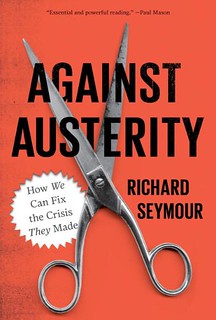Saturday, January 22, 2011
The global ruling class posted by Richard Seymour
The world’s population of high net worth individuals (HNWIs) grew 17.1% to 10.0 million in 2009, returning to levels last seen in 2007 despite the contraction in world gross domestic product (GDP). Global HNWI wealth similarly recovered, rising 18.9% to US$39.0 trillion, with HNWI wealth in Asia-Pacific and Latin America actually surpassing levels last seen at the end of 2007.
For the first time ever, the size of the HNWI population in Asia-Pacific was as large as that of Europe (at 3.0 million). This shift in the rankings occurred because HNWI gains in Europe, while sizeable, were far less than those in Asia-Pacific, where the region’s economies saw continued robust growth in both economic and market drivers of wealth.
The wealth of Asia-Pacific HNWIs stood at US$9.7 trillion by the end of 2009, up 30.9%, and above the US$9.5 trillion in wealth held by Europe’s HNWIs. Among Asia-Pacific markets, Hong Kong and India led the pack, rebounding from mammoth declines in their HNWI bases and wealth in 2008 amid an outsized resurgence in their stock markets.
The global HNWI population nevertheless remains highly concentrated. The U.S., Japan and Germany still accounted for 53.5% of the world’s HNWI population at the end of 2009, down only slightly from 54.0% in 2008. Australia became the tenth largest home to HNWIs, after overtaking Brazil, due to a considerable rebound.
After losing 24.0% in 2008, Ultra-HNWIs saw wealth rebound 21.5% in 2009. At the end of 2009, Ultra-HNWIs accounted for 35.5% of global HNWI wealth, up from 34.7%, while representing only 0.9% of the global HNWI population, the same as in 2008.
The total liquid wealth of the rich in 2009, at $39 trillion, was actually more than two-thirds of world GDP in the same year, almost triple the GDP of the US, and nearly ten times that of China. Another way of looking at it is that the increase in liquid assets from 2008 to 2009 held by the rich was about $6.5 trillion, more than 10% of total GDP in 2009. This was in a year in which world GDP actually shrank by 0.8%.
The distinction between "economic and market drivers of wealth" is very important, and very telling. Most of the new wealth held by the rich was, as you can see, not produced by economic growth, but by stock market capitalisation. In other words, market relations, sustained by state intervention, facilitated the transfer of wealth from the working class to the rich at a time when most of the world's economy was such that the direct exploitation of labour could not sustain high profit rates. That's what the bail-outs did; it's what they were intended to do. Another intended consequence is that there were not only more high net worth individuals, 10 million of them globally (0.014% of the world's population), but the 'ultras' did far better at increasing their share of liquid assets than mere millionaires - thus wealth became even more concentrated than it had been, among a mere 36,300 people, or 0.0005% of the population. The corollary of this has been, and will continue to be, a general decline in the living standards of the working class in most of the advanced capitalist economies: at the same time as the wealth of the richest grew, global unemployment rose by 14.4%.
The role of finance-capital in surplus-extraction varies considerably, of course - and here, China's contribution to the reproduction of the world's ruling class stands out. While financial bail-outs (temporarily) solved many of the problems of the rich in Europe and North America, growth driven by unprecedented spending commitments in China (and, to a lesser extent, India, whose stimulus actually began before the crisis) kept the rich from the Asia-Pacific region in dough, and contributed to the wealth of the US ruling class. This could happen partly because China's growth rates were, like those of many 'newly industrialising countries', already robust. This meant that China's per capita stimulus was greater than that of any other country, and as such accounted for 95% of economic growth in the first three quarters of 2009. But it was also in part because state ownership of the financial and banking sector in China has enabled the government to have more control over the coordination of its stimulus and its effects.
Much has been made of the regime's policy of driving up wages. In fact, what has happened is that China's stimulus enabled an increase in the total amount of surplus value, both by increasing the total employment of labour and by increasing the productivity of labour. Productivity growth has offset wage growth, thus allowing an increase in working class wages and living standards to take place, while continuing the long term strend for wages to decrease as a share of GDP [pdf]. The result is that the top 0.4% of the population controls 70% of the country's wealth. Chinese growth has actually depended on wages sliding as a share of national wealth, and the world capitalist system would be a lot worse off if that hadn't continued to happen. Indeed, according to a World Bank economist, China's stimulus alone contributed 1% to world growth in 2010 - an extraordinary figure. Its GDP by purchasing power parity is already larger than the US by some calculations. China's growth is enabling its ruling class to dramatically increase its demand for luxury goods, accounting for 49% of luxury market growth as the rich spoil themselves with the usual array of jets, mansions, and yachts. But it has also substantially paid for US growth, through direct investment and sovereign debt purchases.
The role of China's working class, the largest in the world by far, in the reproduction of the world's ruling class has, of course, been steadily growing since 1978. The interesting question now is whether this can continue. The World Wealth Report expects future growth to be led by the Asia-Pacific region, "excluding Japan" - despite the latter's substantial stimulus. This obviously means the rich expect China to continue to drive growth and thus profitability. During the last thirty years, China's growth rates have been significantly ahead of its record following the 1949 revolution, and more than double the world average. Its share of world manufacturing rose from 2 to 18%, picking up the slack as manufacturing jobs were lost in Europe and the US. Its expansion fuelled a regional growth surge, eg allowing Japanese capital to increase profits by outsourcing to Chinese labour, and was a significant driver of world growth since 1982.
But the Chinese economy is accumulating tremendous spare capacity as a result of its stimulus package, adding to a global problem and endangering its future ability to produce sustainable growth. It has constantly had to counteract overheating, and may have to substantially reign in growth just when the rest of the world's economies are doing exactly the same, thus undermining its ability to lead a new phase of capitalist growth. The tendencies toward over-accumulation and declining profitability are already evident. Despite the hype about wage increases, real wages are already so low (manufacturing workers in China get less than 5% of the average in the US) that they can't go much lower. Even if they could, the effect may be to contribute to global deflation, thus harming the economies on which China depends for its export markets. China may thus be closer to the end of a long-term wave of growth than the beginning - that growth having been predicated on a now expired global wave of neoliberal expansion based on 'primitive accumulation' and the subsequent record expansion of the country's working class.
Whether and however the ruling class succeeds in overcoming the present barriers to further accumulation, it's hard to see future waves of growth proceeding in this self-same way. Instead, for the foreseeable future, it looks like there will be heightened competition over a diminishing share of surplus value. And Obama has just announced that America's approach in this will be a revamped 'open doors' policy, advised by a new panel headed by the chief executive of General Electric. This will basically involve coercing other economies into accepting US exports at whatever cost to the national or regional economy being thus prised open. It probably presages a new wave of aggression in the global south, especially where popular movements succeed in establishing governments that are interested in independent development based on some concessions for the working class. One would also expect things like this to happen more often, as white supremacy in its various forms is a well-established praxis for weakening the bargaining power of labour and breaking the political threat from the Left. And, especially in a period like this, when growth is thin on the ground and profits have to be wrested through acts of accumulation-by-dispossession, that is how the ruling class makes its money.
Labels: american ruling class, capitalism, china, exploitation, profits, ruling class, the rate of exploitation










